How Do You Track Conversion and a/b as a Product Manager
Conversion Rate Optimization: The Definitive Guide
This is a complete guide to conversion rate optimization (CRO).
In today's guide you'll learn:
- How to run A/B tests
- How to optimize landing pages
- How to convert first-time visitors into customers
- Dozens of CRO best practices
In short: if you want to get more leads, sales, and signups, you'll love this new guide.
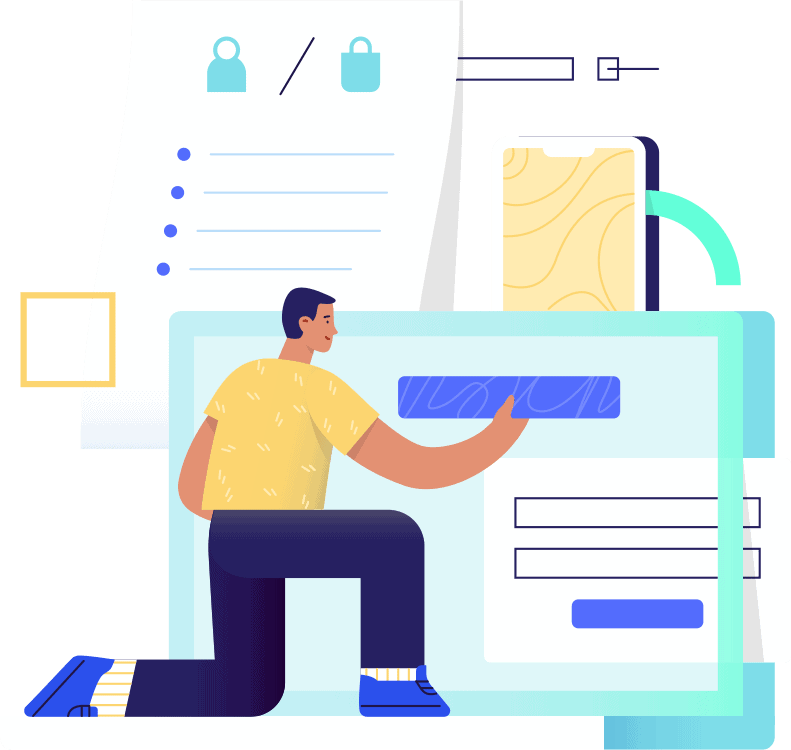
Contents
Chapter 1:CRO Basics

In this chapter I'll cover conversion rate optimization fundamentals.
(Including what it is and why it's important)
So if you're just getting started with CRO, this chapter is for you.
Let's jump right in.
What is Conversion Rate Optimization?
Conversion Rate Optimization (CRO) is the practice of optimizing your website to maximize the number of people that take a desired action, such as signing up for a newsletter or making a purchase.
As you might expect, a "conversion" is the specific action that you want visitors to take.
Do you run an Ecommerce site? Then a "conversion" is buying one of your products.
Are you a blogger? Then a "conversion" is signing up for your email newsletter.
Are you a SaaS founder? Then a "conversion" is signing up for a free trial.
What is Conversion Rate?
Your conversion rate is the percentage of people that visit a page and take a desired action.
You can calculate your conversion rate by dividing number that actually convert by the number of people that visit a page.

For example, let's say that you run a software product that helps people stick to their diet.
And 100 people visit your homepage every month.
If 10 of those people sign up for a free trial, that page's conversion rate is 10%.
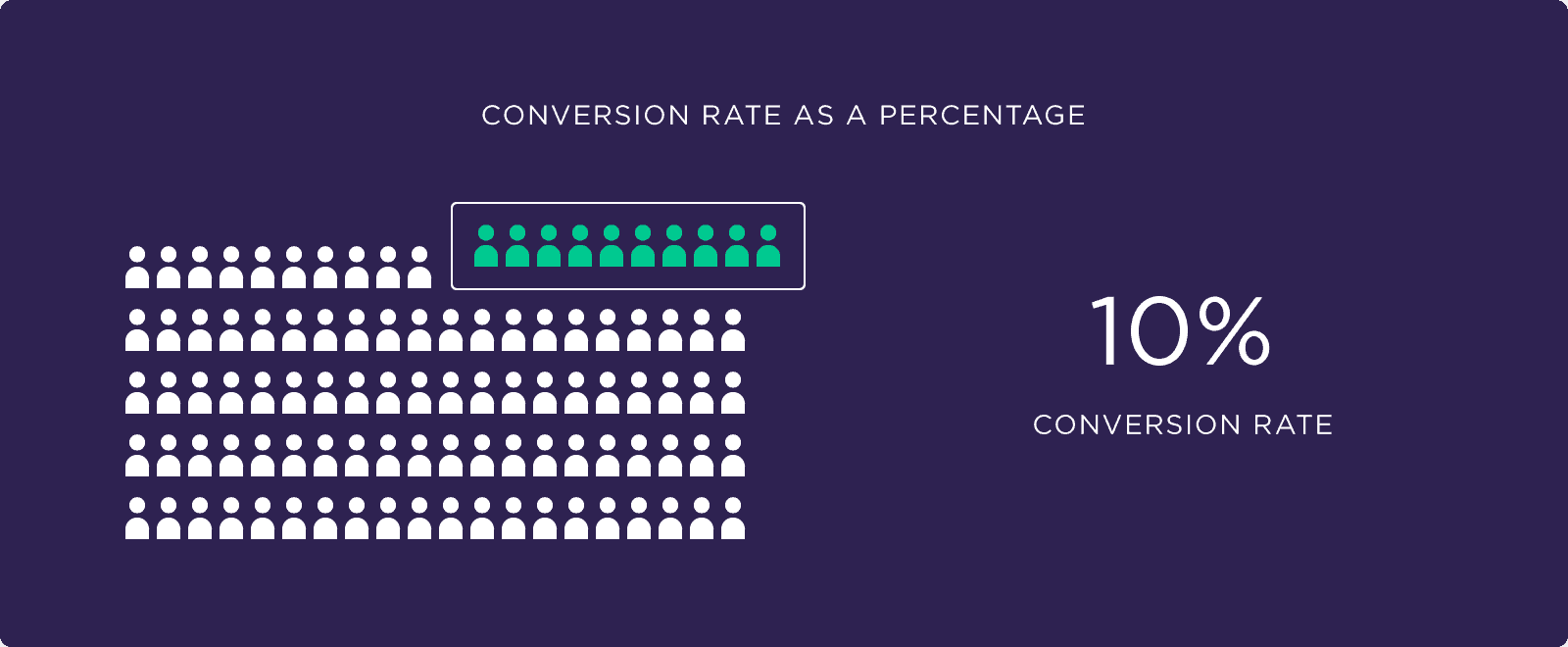
Why is Conversion Rate Optimization Important?
You might have heard the phrase: "It's easier to double your conversions than double your traffic".
And it's 1000% true.
A simple tweak on a landing page can double or even 10x that page's conversion rate.
That's why the ROI of conversion rate optimization is off the charts.
I'm not going to bore you with a bunch of stats. I just want to highlight a few industry studies that prove CRO is worth the investment.
68.5% of companies in one survey said that they plan to make CRO a "higher" priority than last year.

And it's no secret why: only 22% of businesses are happy with their site's conversion rate.

When businesses DO decide to invest in CRO, it usually pays off. Venture Beat reports that the average ROI from a CRO tool is 223%.

Why Conversion Rate Shouldn't Be Your #1 Goal
I should point something out:
The term "Conversion Rate Optimization" is kind of misleading.
Yes, you want to increase your conversion rate. But it shouldn't be your #1 goal.
Here's why:
Let's say that you run an Ecommerce site that sells iPhones. And your conversion rate is 5%.

Well, if you started selling your iPhones for 1 dollar, your conversion rate would probably increase to 100%!

Bottom line? Increasing your conversion rate is nice. But the ultimate goal of CRO is to increase the amount of revenue that your site generates. 9 times out of 10, these two goals align. But it's an important distinction to make.
With that, it's time to dive into chapter 2.
Chapter 2:How to Get Started With CRO
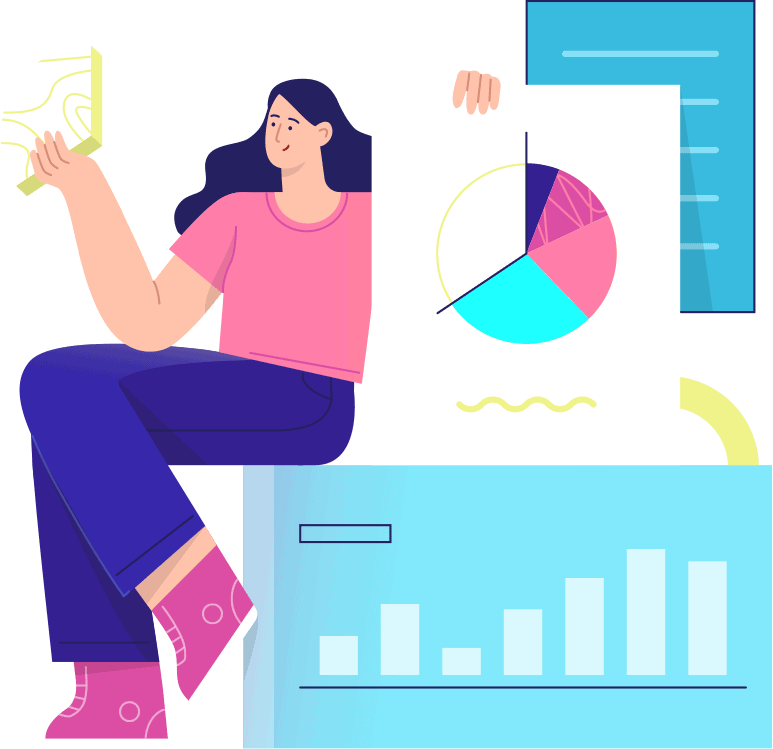
This chapter is all about the critical first step of any CRO campaign: collecting data.
And let me be clear about something:
Most people skip this step. And they end up testing random stuff (like button colors).
Sure, you might get a slight bump in conversions with a button color change.
But if you want to get 2-10x conversion boosts, this initial research is KEY.
So without further ado, here's how to CRUSH data collection for CRO.
Internal Goals and Benchmarks
Your first steps are to set up goals for your CRO campaign… and figure out where you're at.
For example, let's say that you run an Ecommerce site.
Your goal might be to boost overall site conversion rate by 10%. Or maybe you want to focus on improving a specific product page.
Either way, it's important to set these high-level goals BEFORE you get into the weeds of Analytics and A/B testing.
Then, once you've set your goals, it's time to jot down your current conversion rate (aka your benchmarks). That way, you can monitor whether or not your conversion rate improves… and by how much.
Dig Into Google Analytics
So now you know your site's current conversion rate. You also have a specific goal.
Great.
Now it's time to figure out WHY your pages aren't converting as well as they should.
And the first place to look? Google Analytics. Analytics tells you exactly WHERE conversions are strongest (and weakest).
For example, cart abandonment is a huge problem for many Ecommerce sites. And Analytics can tell you where in the process people tend to drop off. That way, you know where to start testing.

Another example: a blog.
You can use Google Analytics to see which blog posts do the worst job converting readers into email subscribers.

Analytics can also help you see conversion rate differences between devices.
For example, you can see that my conversion rate from tablets is almost half of mobile phones and desktops.

Which means I'd want to figure out why tablet users aren't converting. It could be that my pages display weird on iPads. Or that my popup isn't loading on tablets.
Either way, this kind of stuff is usually a quick win. And something that you can ONLY find using analytics.
Find Quantitative Data
Quantitative data is another goldmine that you can use to increase conversions.
First, you can fire up heatmap and user session software like HotJar and Crazy Egg.

These tools show you how people interact with your pages. Which takes a lot of the guesswork out of answering: "Why does this page convert like crap?".
For example, I have two "helpful resources" in my blog's sidebar. And according to my heatmap data, the vast majority of people completely ignore them.

So if I wanted to improve the conversion rate on my blog posts, I'd want to test different resources in the sidebar… or delete them altogether.
You can also use survey tools to poll users about why they landed on a certain page.
For example, HubSpot asks multiple choice questions to better understand what their visitors want to achieve.

Collect Qualitative Data
Quantitative data is nice and all.
But if you want to paint a full picture of why people don't convert, you also need qualitative data.
You can grab this data using:
- In-person or Skype interviews
- In-depth surveys
- On-site surveys
- Chat logs and customer support tickets
- User testing
So yeah, there are a million different ways to collect qualitative data for CRO.
That said, the exact approach isn't as important as asking the right questions.
Specifically, you want to ask questions that help you figure out why people DO and DON'T convert.
For example, let's say you run an SEO agency. You'd want to ask current clients and site visitors questions like:
- "What's the #1 reason that you want to hire an SEO agency?"
- "What other SEO services have you looked at?"
- "What kind of price range are you looking at?"
- "What would make you say: 'YES, this agency is right for me'?"
Then, you'd want to use these responses to inspire A/B tests.
Speaking of…
Chapter 3:How to Run A/B Tests
In this chapter you'll learn how to conduct A/B tests like a pro.
So if you've ever asked yourself:
"How do I get started with split testing?"
"What's the best A/B testing software?"
"How do you actually perform an A/B test?"
This chapter has you covered.
Do You Have Enough Traffic?
If your site doesn't get much traffic, A/B testing is pretty much impossible.
Why?
Because your tests won't reach statistical significance.
(Most optimizers consider a result legit at 90-95% statistical significance)
Fortunately, you can easily find out if your site has enough traffic for A/B testing with Optimizely's Sample Size calculator.

Just enter your page's current conversion rate, the boost in conversion rate you want, and a statistical significance level.

And the tool will let you know how many visitors you need to hit significance with your test.

What To Split Test First
One of the biggest questions people have about split testing is:
"What do I test first?"
It's a tough question to answer. After all: there are a million things that you can test on your site, from headlines to pricing to button copy.
That said, here are 3 ways to help you decide where to start with A/B testing:
1. High-Traffic Pages
This is simple math.
When you improve the conversion rate on a page that gets a lot of traffic, you'll get A LOT more conversions.
For example, last year I decided to run a split test on the Backlinko homepage.

Why did I start with the homepage?
It gets more traffic than any other page on my site.
2. Worst-Performing Pages
You can also start A/B testing on pages that have a super low conversion rate.
Why?
They have nowhere to go but up.
In fact, you can sometimes see a 5-10x improvement on low-converting page with a single A/B test.
3. Qualitative and Quantitative Data
The data you collected in the last chapter will come in handy here.
Here's where you let the data inform your first test.
For example, let's say your user testing data told you: "People have trouble finding the button to book a room".
Well, your first test should be putting a "Book a Room" button front and center on your page.
Create a Hypothesis
Now that you've decided what to start testing, it's time to create a hypothesis.
Why is this important?
Well, without a hypothesis, you end up testing random stuff without any rhyme or reason.
And a hypothesis helps you test stuff based on logic and data.
(Not gut feelings)
For example, last year I decided to test a scrollbox at Backlinko:

My hypothesis was that a scrollbox would improve newsletter signups without hurting conversions in other places (like exit intent popups).
And I made sure to jot down that hypothesis before I started the test:

How to Run an A/B Test
Here are two tips to help you run split tests:
First, start testing BIG changes.
One of the most common A/B testing rookie mistakes is testing tiny changes.
(Like button colors)
Instead, you want to start testing two VERY different versions of your pages. Then, refine the winning page with smaller changes over time.
For example, when I ran a test on the Backlinko homepage last year, I could have tested my button copy, logos, headline font size… and a thousand other minor tweaks.
Instead, I tested dramatically different versions of the page.
Specifically, my old homepage linked to my recent blog posts.

So I decided to test that original design against a version that offered a free case study in exchange for an email.

Sure enough, because I tested something big, I got a BIG boost:

Second, you'll need software.
There are dozens of A/B testing tools on the market, like:
- Unbounce
- VWO
- Optimizely
- AB Tasty
I personally use Optimizely, but it ultimately depends on your budget and the features that matter most to you.
Collect Results and Scale
Your last step is to collect your results, analyze them, and learn.
Fortunately, most A/B testing software lets you know if your results have reached statistical significance:

Then, once you've found a winner, it's time to jot a few things down. Specifically, answers to these questions:
- Was our hypothesis correct?
- What lesson did we learn that we can apply to future tests?
- Based on these results, what should be tested next?
Chapter 4:Conversion-Focused Design
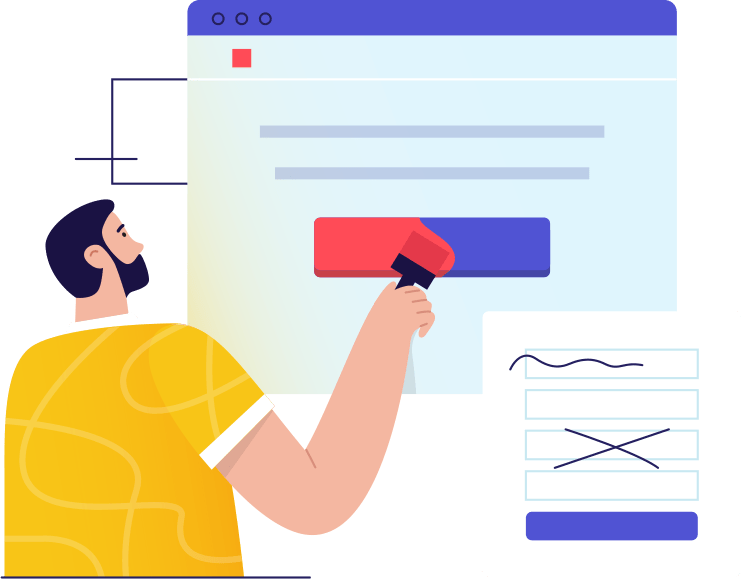
As you probably know, site design isn't just about looking pretty.
Instead, the goal of your site's design is to get your visitors to convert.
And in this chapter you'll learn how to maximize conversions with design.
Persuade With Image Captions
According to one of my all-time favorite copywriting books, Cashvertising, captions get read 2x more than non-headline copy.
Don't waste that precious real estate with a boring description. Instead, write persuasive copy in your captions.
Here's an example:

Guide Users With Directional Cues
Directional cues guide users to a specific place on your page. For example, if you see an image of someone looking to the right, you'll probably look there too. Or if you see an arrow, your eyes will probably follow where it leads.
Here's a great example of directional cues in action:

See how the guy is looking up at the button? Subtle… yet super effective.
Turn Boring Forms Into Fill In The Blanks
Let's face it: no one likes filling out forms. That is, unless you make them fun. One company found that replacing a typical boring form with a "Mad Lib"-style form boosted form completion rate by 25%-40%.

Make CTAs Look Clearly Like Buttons (Instead of Text or Images)
When it comes to CTAs, traditional-looking buttons work best. That's because people are used to clicking on buttons.
And if your CTA looks like a text link or an image, people won't always know that they're looking at a call-to-action. You guessed it: that means fewer people will click.
Show a Giant Phone Number for Mobile Visitors
If you run a business where calls = leads = revenue, try turning your tiny text phone number into a large, clickable number. A prominent phone number can also boost credibility and trust.
Here's an example:

Use Short Landing Pages for Small Commitments
For small initial commitments (like an email opt-in or lead gen form) try a super-short landing page.
For example, Pastel's trial signup page is extremely short and (I can imagine) converts well for them:

Use a Progress Bar
Use a progress bar for multi-step funnels and form submissions. Why? A progress bar motivates people to finish what they started. Here's an example from GoDaddy:

Use an "Action Color" For Your CTAs
The last thing you want is for your button to blend in with the rest of your page.
Fortunately, you can easily get around this issue. How? Make your CTA contrast with the rest of your page. And BINGO… you have a CTA that instantly stands out.
For example, in a case study published at Hubspot, Performable saw a 21% lift in conversions when they switched to a high-contrast red button.
Reduce Options and Form Fills
Lots of options=anxiety.
In fact, cutting out just a single option can make a HUGE difference. Expedia boosted annual sales by $12 million dollars by removing a "Company Name" field from their signup process:

Bottom line? Destroy all unnecessary options on your site.
Chapter 5:How to Create High-Converting Landing Pages

When it comes to CRO, landing pages are HUGE.
That's because your landing page exists for one reason: to get someone to convert into a lead or sale.
So if you can increase your landing page conversion rate by 10%, that's 10% added directly to your bottom line.
And in this chapter you'll learn a handful of actionable techniques that you can use to boost your landing page conversion rate.
Test Negative Words In Your Headline
Outbrain discovered that negative words in headlines like "never" and "worst" outperform positive words, like "always" and "best"… by 63%.

For example, a headline like "5 worst foods for losing belly fat" will grab more attention than "5 best foods for losing belly fat".
Replace "Buy" or "Sign up" with Benefit-Oriented CTAs
The word "buy" reminds someone that they're about to make a big commitment. Not good. So instead of "buy", use CTAs that emphasize what they'll GET.
Here's an example from Unbounce:

Instead of "Buy Plan", they say "Start My Free 30-Day Trial", which is much more benefit-oriented.
Use Action-Focused Copy
Copywriters have long known that this action-oriented copy is more persuasive than passive copy.
So instead of highlighting facts ("Our product helps people lose weight"), describe what will HAPPEN when someone uses your product ("Lose that stubborn belly fat").
Show Expert Social Proof
Social proof isn't all about having thousands of customers. You can also use social proof in the form of quotes from experts, logos of companies you've worked with, and awards you've won. In fact, expert social proof ("Our clients include Microsoft") can be more powerful than sheer numbers ("We've served 876 clients").
You may notice that I use this strategy here at Backlinko. I include logos of places I've been featured at the top of my homepage.

Use Information Gaps
When you get a little bit of information (but not the whole thing) you'll do almost anything to close the gap.
Information gaps are especially powerful for email opt-ins and lead generation.
For example, let's say you just wrote a weight loss ebook.
You could use copy like this to create an information gap: "Research shows that this seemingly 'healthy' food actually slows down your metabolism".
I know I'm curious about what that food might be (and I made that example up ???? ).
Make Your Headlines SUPER Specific
It's a fact: vague headlines don't sell. Instead, you want your headline to be insanely specific about what your product or service does. Yes, you may turn some people away. But your target customers will eat it up.
For example, look at BonFire.

Instead of something lame like "The Next Generation of T-Shirts", they go with the much more specific "The easy way to design and sell t-shirts online".
Nice.
Use Inline Validation
Inline validation=awesome. Ever spend 10-minutes to fill out a form, only to see a "You need to accept the terms of service" error message? #facepalm
Instead of showing people errors after they fill out and submit your form, inline validation gives people notes as they work. Here's a real-life example:

And there's data to back this up: several case studies (including this one) found that inline validation significantly improves form completion rates.
Use No-Nonsense Headlines
The purpose of your headline isn't to straight up sell. Instead, the #1 goal of your headline is to show people the benefit of using your product.
That's why you want to use copy that highlights the #1 benefit people will get from your product or service. Here's a great example:

Use Likes, Users, Followers or Customers as Social Proof
Whether we admit to it or not, social proof has a strong influence on what we do. In the world of CRO, you can use social proof in the form of Facebook likes, customers, total users, number of downloads… or anything else that shows off social proof.
Here's an example:

Like anything in CRO, social proof doesn't work 100% of the time. So if you already have social proof on your landing pages, you might want test removing social proof from your landing pages (or try a different form of social proof).
Replace Jargon With Plain English
Your visitor shouldn't need a PhD to understand your copy.
The fact is, jargon like this does NOT work: "We are an enterprise software company that focuses on providing customers with revenue-driven solutions throughout the sales cycle." Huh?
Instead, use copy anyone can understand: "We're a CRM that helps you get more sales."
Replace Blocks of Text With Bullets
No one likes to read huge blocks of text (especially on a super long sales letter). Instead, break things up with bullet points.

Show Your Price on Landing Pages
If your price is lower than average, don't hide your price. Why?
Well, when you hide your product's price, people think: "Where's the price? This thing must be crazy expensive."
In fact, Market Dialer found that including a price of "$75 per seat" doubled conversions.

Chapter 6:CRO for Ecommerce Sites
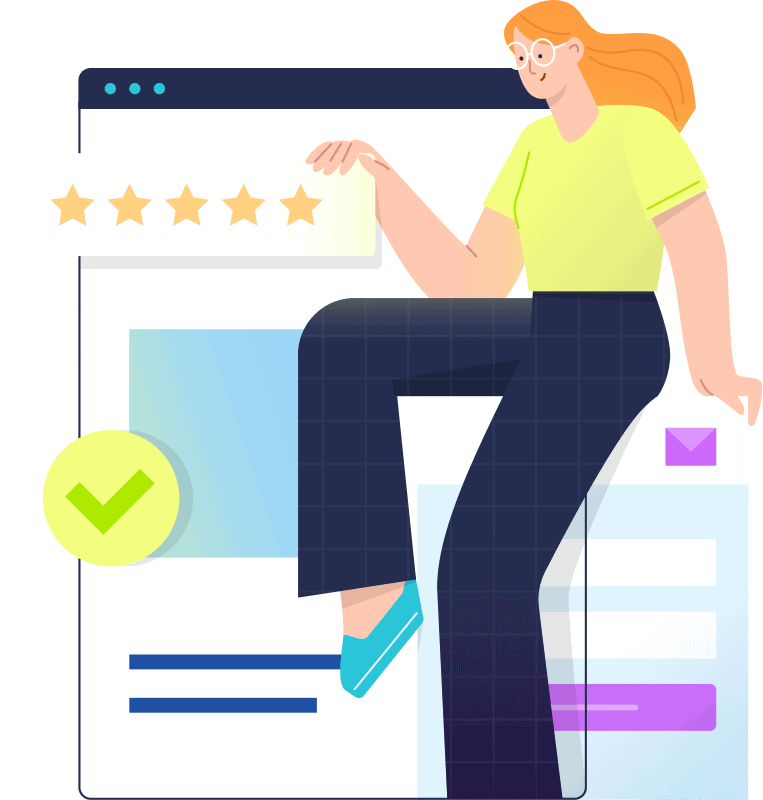
If you run an Ecommerce site, you already know that you can draw a straight line between conversions and revenue.
The question is:
How do you optimize your ecommerce site for conversions?
That's exactly what this chapter is all about.
It's a collection of CRO techniques specifically designed to turn ecommerce site browsers into buyers.
Use Price Anchoring
Want to make your products seem dirt cheap… without slashing prices? Try price anchoring.
Here's how it works: When you show someone a certain price, they're "anchored" to that price for a short time.
(That's why infomercials show a bunch of higher prices before revealing the actual price).
Williams-Sonoma anchors like a boss. Most of the products on their category pages have a "Suggested Price" price anchor:

Add "Reassurance Copy" to Product and Checkout Pages
Reassurance Copy are little snippets of copy around your CTAs that make your customer feel more comfortable about their decision.
This can be free shipping, a money back guarantee, your privacy policy, social proof, or a key benefit.
Booking.com is the king of Reassurance Copy. They sprinkle them EVERYWHERE. I count five of them just in the above the fold area of this hotel listing page:

Show MULTIPLE High-Quality Product Images
You probably already know that product images can make or break your product page conversion rate.
So before you throw up a single hero shot, consider featuring 5-10 images of your product.
You can show images of the product from different angles.
You can also show your product in action.
For example, this product image of a Crock-Pot features a delicious stew cooking in the pot:

Clearly Mark Your Top Sellers
Marking a product as a "Top Seller" or "Popular" s a VERY strong form of social proof.
Here's an example:

Want to take this to the next level? Personalize your best seller list by customer segments or purchase history.
For example, Booking.com notes that certain rooms are ideal for certain types of travelers:

Have an (Awesome) Site Search
Site search can make a HUGE difference in Ecommerce conversions. Why? Because you're showing people exactly what they want to find!
Pro Tip: Pay attention to products that people search for the most. Then, make those sought-after products easier to find. For example, you can feature them on your home page or at the top of a category page.
Feature High-Revenue Products Above The Fold
If you want an EASY way to increase conversions, feature your most profitable products front and center in the above the fold area of your site. This rule applies to your homepage as well as product and category pages.
Collect Emails and Nurture
Yes, you want that visitor to buy right away.
But unless you're Amazon, that's probably not going to happen. So instead of trying to close right away, consider a popup that offers something for free (like a list of recipes or awesome newsletter).
Here's an example:

Then, drip your new lead valuable content and discounts. When they ARE ready to buy, you'll be the first company that comes to mind.
Add Product Filters
If you have a category page with 1001 products on it, add a product filter. That way, people can easily see items that fit their style, size and budget.
Kilt ecommerce site Kilt Society saw a massive 76% increase in revenue when they added a simple product filter to their category pages:

That means 76% more men wearing kilts. That's a good thing, right?
Let Customers Checkout as a Guest
Yes, capturing emails is wonderful. But if you force would-be buyers to "register for an account", you might be losing out on some serious revenue.
Yes, Amazon and other giants can get away with it…

…but if you run a mom and pop Ecommerce site, let users buy without creating an account. In fact, 26% of people say they won't complete a purchase if they're forced to register for an account.
Use Discount Popups
Consider offering your visitors a discount in exchange for their email address.
The best way to do that? An exit intent popup.

Use Interactive Product Images
Interactive images are as close as you can get to an in-store shopping experience on the web. Ecommerce Partners found that an interactive zoom boosted sales at an online shoe store by 51%.
Add Trust Symbols
Several industry studies (like this one) show that trust symbols (like association memberships, credit card logos and security icons) boost conversions… especially at checkout.

Optimize for Mobile Buyers
If you haven't optimized your Ecommerce site for mobile phones and tablets, you need to hop in your Delorean and leave 1998 in a hurry.
And for the record: "mobile optimized" doesn't just mean that your site technically works on an iPhone. The entire experience needs to be flawless. Otherwise, people are going to head over to Amazon.
For example, ProFlowers increased their conversion rates by 20-30% when they made their site easier to use on mobile.

Make Product and Category Pages Load Lightning Fast
Amazon once reported that one second of load site delay can cost them over $1 billion in annual sales. Needless to say, they don't let that happen ????

So whether you run your Ecommerce site on Shopify or BigCommerce, it's important that your pages load pretty much instantly. If you're ready to get started, here's a helpful guide to improving ecommerce site pagespeed.
Hide Your Coupon Field
When you see a coupon field on a checkout page, what do you do? You go to Google and search for coupon codes!
And you might never end up going back to that checkout page. So removing (or hiding) the coupon field can really help with shopping cart abandonment.
Here's an example:

Show Why You're Better
You don't always need to woo potential customers with fancy copy.
Instead, directly compare your product with the competition. That way, people can quickly see why they should choose you over the rest.

Test Different Prices to Maximize Revenue
You can split test headlines and button colors till you're blue in the face. And hey, you'll sometimes see a lift on conversions.
But you can sometimes get a HUGE conversion boost by lowering or raising your prices.
Obviously, a lower price can boost conversion rate… but hurt profits. And a higher price can hurt your conversion rate… and increase profits.
So if you decide to use this approach it's important to look past pure conversion rate numbers and focus on revenue.
Keep the Number of Items In Your Cart Visible
People on a shopping spree can lose track of what they put into their cart. You can easily sidestep this issue with a feature that shows people how many items they have in their shopping cart.
Here's an example from Keurig:

Chapter 7:How to Create Irresistible CTAs

There's no other way to say it:
Your call-to-action can make or break your conversion rate.
Use the wrong CTA? Your visitor will say: "Nah. Maybe later".
But when you use the CTA, you'll find more users hitting that "buy" button.
So without further ado, here are simple (yet effective) strategies you can use to craft powerful call-to-actions.
Test First and Second Person Copy In Your CTAs
Several CRO case studies show that first person CTAs ("I want to try it!") works well.
However, some people have seen a higher conversion rate with the second person ("Get your free quote"). Try both.
Add Urgency to Your CTA
Want an easy way to get more visitors to whip out their wallets? Add urgency to your call-to-actions.
Pro Tip: Use numbers to spark urgency. For example: "Order in the next 2 hours for delivery today" or "Only 7 left" works better than "Supplies are limited".
For example, look at easyJet. They actually show you the number of people looking at the same route. This makes you think "I better book this flight before someone else does":

Add Countdown Timers to Time-Sensitive Offers
A countdown timer is one of the best ways to dial up scarcity for time-sensitive products.
In this ConversionXL case study, Marcus Taylor saw a 332% increase in conversions by adding a countdown timer to one of his landing pages.

Bonus Chapter:Advanced Tips and CRO Best Practices
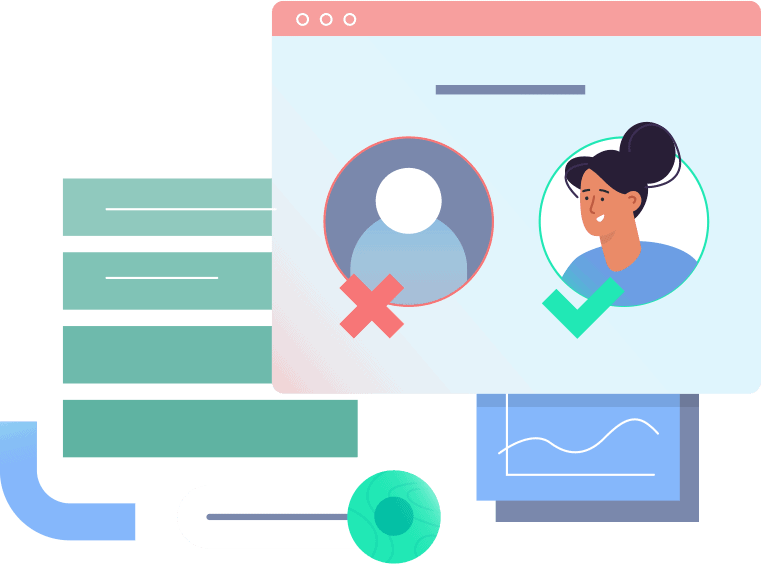
Now that we've covered the basics, it's time to go advanced.
In this chapter you'll see advanced tips and CRO best practices that you can use to get more conversions… FAST.
Test The Weakest Links In Your Funnel FIRST
Let's say you have a funnel with 7 steps. How do you know which step to optimize first?
Well, most people focus on the beginning (landing page) or the end (checkout page). And it's a rookie mistake.
Instead, focus on fixing the bottlenecks. First, outline each step of your funnel. Then use Analytics to measure the conversion rate at each step. Finally, zero-in on the worst performing steps first. These are steps where people "fall off" your funnel… and have the highest upside.
Ask for Micro-commitments
Micro-commitments let a visitor "date" you before getting married.
In the world of conversion rate optimization, micro-commitments can be used in two ways:
First, you can include tiny commitments at the top of your sales funnel. For example, you can offer a free trial or a monthly membership instead of making people commit to a pricey annual plan.
Second, you can emphasize smaller commitments in your sales copy. For example, a call to action like "See a sample" sounds like less of a commitment than "Get a free quote"… even though they're basically the same thing.
CrazyEgg does an awesome job with this technique. Instead of asking you to sign up, they let you take their software for a spin:

Directly Counter Objections
Don't be afraid to feature customers objections on your landing pages… and directly counter them.
Common objections include:
- Why should I believe you?
- What if it doesn't work for me?
- It's not worth the money.
- How does this compare to…?
Here's an example of this technique in action:

Give People MORE Information
Squeeze pages don't need a ton of info. A short description of the free ebook usually does the trick.
On the other hand, sales pages for complex and costly products need LOTS of info.
You've probably seen insanely long sales pages for online courses. Why are they so long? Because people need a lot of convincing to invest in an online course.
So if you have an expensive product, don't be shy about providing people with A LOT of information.
Make Your "About Us" Page More Human
If your site is like most websites out there, your About Page is one of your top 5 most-visited pages.
So don't waste the opportunity to show people that your company is made up of living, breathing human beings. Wistia's About Page is a perfect example of this concept in action:

Instead of stiff headshots, Wistia lets their employees show off some personality.
Use Specific Stats and Numbers
Looking to add credibility to your copy? Sprinkle in stats and figures. For example, "works 52% better than the competition" is much more powerful than "best product around!".
Here's an example from Unbounce:

Test Live Chat Support
In many industries (like SaaS) live chat can mean the difference between a sale and an abandoned cart. In fact, Zendesk reports that 92% of consumers are satisfied after using live chat.
Pro Tip: Read over chat transcripts. You'll probably find that the same 5-10 questions crop up over and over again. Then, address those questions on your landing pages or add them to your FAQ page.
Autofill Fields at Checkout
It's no secret that more fields=fewer conversions. But what if you absolutely need a ton of fields? Try autofill fields.
For example, automatically pull in a user's city and country info from their zip code. This means less typing, which can increase your conversion rate significantly (especially on mobile).
Create MORE Landing Pages
According to Hubspot, companies with 10+ landing pages generate 55% more leads than companies with 5 fewer landing pages.

Why does this work?
More landing pages=more personalized offers. You can create one landing page for moms, another page for dentists, etc.
Also, more landing pages=more potential traffic from long tail searches in Google.
But be careful: you can't just take the same offer and make 30 different versions of it. That's duplicate content.
Instead, make each landing page 90%+ unique. That means different copy, different images, different lead magnets, and different CTAs.
Encourage Customers to Share Their Purchase
Encourage users to share what they just bought on Facebook and Instagram.
This will not only bring you some referral sales ("Those sneakers look awesome. I want 'em too!"), but this can also increase your brand awareness.
For example, EventBrite started encouraging customers to share their tickets on social media. They found that the average return on a share was $4.15 for Facebook and $1.85 for Twitter.

Not bad.
Now It's Your Turn

I hope you enjoyed my guide to CRO.
Now I want to turn it over to you: Which of the tips from today's guide are you going to try first?
Are you going to work on your landing pages? Or start A/B testing?
Let me know by leaving a quick comment below right now.
How Do You Track Conversion and a/b as a Product Manager
Source: https://backlinko.com/conversion-rate-optimization
0 Response to "How Do You Track Conversion and a/b as a Product Manager"
Post a Comment